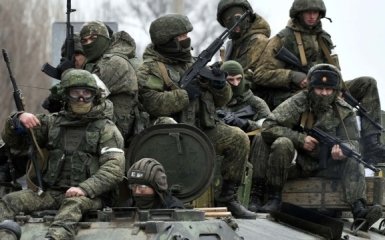At the front, strange Russian tanks with "shells" are being recorded more and more often. T-72 with wide protective armor on top were called "turtle tanks". They can probably be used for demining.
How dangerous are Russian "turtle tanks"
As Forbes writes, all spotted "turtle tanks" belong to the 5th Motorized Rifle Brigade, a former separatist unit now under Russian command.
Both Ukrainians and Russians tried to protect their tanks from drones and shells. For this, protective cages or bars were used, which only somewhat limited the rotation of its gun turret.
The armoгr in the "turtle tank" shell leaves only a tiny gap in the front, preventing the gun from rotating. The apparent shortcomings of homemade armour raise questions.
The role of the turtle aquarium seems to have been to destroy it,' commented weapons scientist Matthew Moss wryly.
These tanks are likely to act as breachers, plough-equipped engineering vehicles whose main job is to guide other vehicles through a minefield to get them close enough to enemy lines to attack. The particular vehicle is equipped with dense armour, as the enemy is assumed to fire on it.

Can anything stand up to "turtle tanks"?
The US Army has the best breakout vehicle in the world, a nearly 70-ton vehicle that is effectively an M-1 tank without a gun and with mine clearance equipment attached. At the end of last year, the Americans quietly presented the Ukrainians with several such assault breakers.
The Russian army does not have a breakthrough of the same class. The Russian IMR's own engineering vehicles, as a rule, function as emergency vehicles. They weigh only 50 tons, have less protection and a bulky crane.
Faced with a Ukrainian minefield and swarms of tiny FPV drones, and with no specially designed breachers, the 5th Motorised Rifle Brigade technicians may have decided to create their breachers.
If the theory is true, the Russians took older T-72 tanks—perhaps ones whose turrets already had trouble moving—and added two things every breakout vehicle needs: extra armor and mine clearance equipment. It is difficult to check the presence of the second component of the penetrator in the "turlte tanks", because it is hidden behind the armor.
Analyst Rob Lee of the Institute for Foreign Policy Studies in Philadelphia noticed a mine roller on one of these tanks. This is a set of sturdy wheels that actuate mines just ahead of the car.
This "turtle tank", which was also the first of its type to be equipped with protection against unmanned aerial vehicles, continued to advance after passing several mines, Lee noted.
So far, only one turtle tank has been destroyed — it was hit by artillery after returning to base after the battle on April 8. If there is any reason to fear for the long-term future of such tanks, it is that they are protected from FPV.
If the shortage of ammunition in Ukraine ends soon, then the Russian "turtle tanks" will not live on the battlefield for so long.




